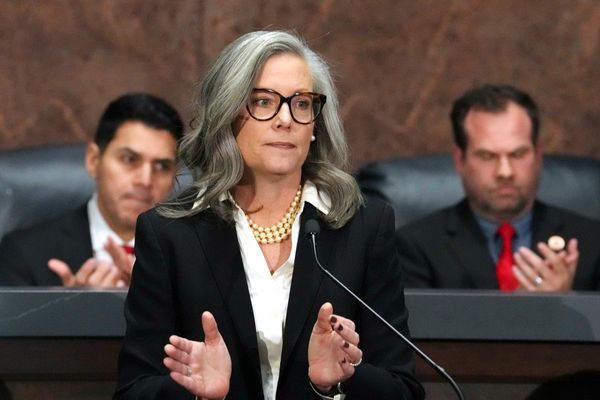
A federal judge in Massachusetts blocked Donald Trump’s administration from cutting scientific research grants from the National Institutes of Health (NIH) after 22 mostly Democratic-leaning states sued.
The Trump administration sought to impose a 15% cap on “indirect costs” for grants – money that goes toward overhead, such as keeping the lights on in labs or maintaining advanced equipment. On Tuesday, major universities filed a second lawsuit, calling the administration’s actions “flagrantly unlawful” in a complaint.
“A cut to [indirect costs] for NIH grants is a cut to the medical research that helps countless American families whose loved ones face incurable diseases or untreatable debilitating conditions,” a group of university associations said in a statement.
Indirect costs, “are the real and necessary costs of conducting the groundbreaking research that has led to so many medical breakthroughs over the past decades”, they said.
Speedy court action to block the proposed cuts comes at a time when the Trump administration is teasing the idea of ignoring courts, prompting fears of a constitutional crisis.
“To hand his billionaire backers another tax cut, Trump tried to slash funding for critical disease prevention research, including for pediatric cancer,” Ken Martin, Democratic National Committee chair, said in a statement.
“We aren’t going to sit back as Trump goes after America’s kids.”
The NIH is an arm of the Department of Health and Human Services. With a budget of $48bn, it is the world’s largest public funder of biomedical and behavioral research, with impacts that ripple across the scientific world.
NIH grants fund a vast array of science, especially including early stage research that leads to blockbuster drugs. The agency’s grants have contributed to many of the drugs Americans are now familiar with, including statins such as Lipitor and curative hepatitis C drugs such as Harvoni.
NIH-funded basic or applied research has also contributed to 386 of the 387 drugs the Food and Drug Administration approved between 2000 and 2019, and more than 100 Nobel prizes have been awarded to scientists based on NIH-funded work.
In one of the first social media posts since Trump’s inauguration, the NIH said that the 15% cap on indirect costs would save $4bn per year, and singled out Harvard, Yale and Johns Hopkins as spending too much on overhead.
Although the NIH’s budget is less than 1% of all federal spending, the scientific agency has become a target of the Trump administration, and cutting the NIH serves multiple aims.
The move comes ahead of an expected debate to extend Trump’s 2017 tax cuts. The cuts helped billionaires pay less in taxes than the working class for the first time. An extension is expected to add to a huge budget deficit.
Many of Trump’s supporters also criticized the NIH following the Covid-19 pandemic, and laid out plans to dramatically reorganize it in Project 2025. Additionally, cutting NIH grants hits American universities, including many elite research institutions, in their pocketbooks. The administration has repeatedly attacked such universities as bastions of liberalism.
This is not the first time Trump proposed cutting scientific research. In 2017, his budget attempted to slash scientific research funding.
Within scientific circles, many agree the NIH could benefit from reform. However, many also argue the process needs to be transparent and involve stakeholders.







